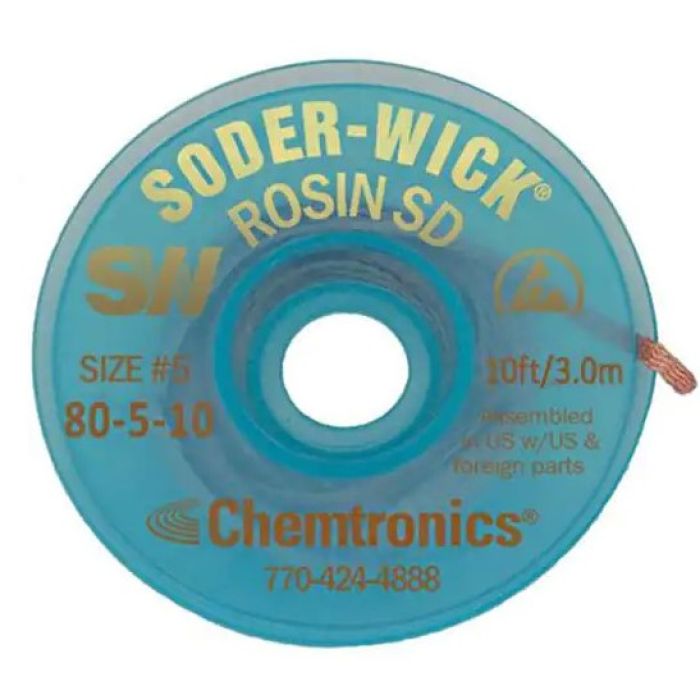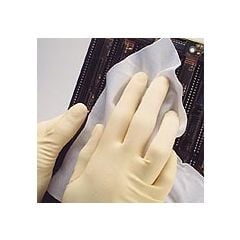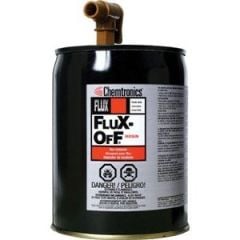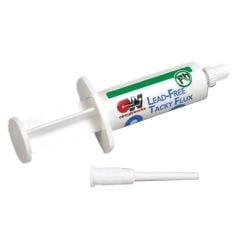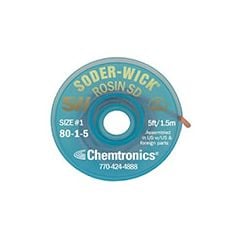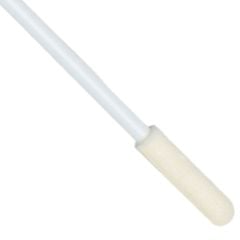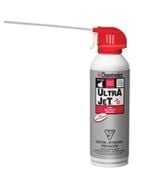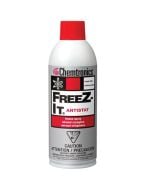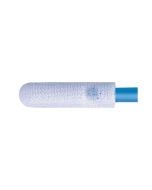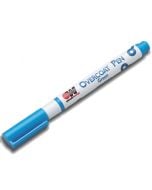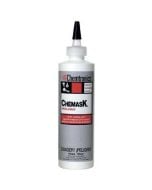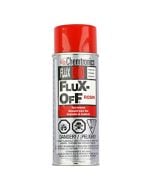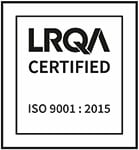
#5 Soder-Wick® Rosin Flux ESD-Safe Desoldering Wick, Brown, 0.145" dia. x 10' Spool
Soder-Wick Rosin has the fastest wicking action, but rosin flux leaves behind residues that should be removed with a flux remover. Flux-Off Rosin flux remover is an ideal choice for your cleaning process. Soder-Wick brand desoldering wick offers the state of the art in desoldering technology. Soder-Wick is designed for today’s heat sensitive electronic components using lighter mass, pure copper wick construction that allows for better thermal conductivity, even at low temperatures. Soder-Wick responds faster than conventional desoldering wicks thereby minimizing overheating and preventing PCB damage.
- Noncorrosive ultra high purity Type R rosin flux
- Minimizes the risk of heat damage to the board
- Will not leave ionic contamination on the boards
- Buy 12 for $11.17
- Buy 50 for $11.06
- Buy 100 for $10.94
Specifications
- MIL-F-14256 F type R flux
- NASA-STD-8739.3 Soldered Electrical Connections
- DOD-STD-883E, Method 2022
- ANSI/IPC J STD-004, Type ROL0
FAQs
What is desoldering wick made of?
Desoldering wick is made of fine strands of ultra-pure copper woven and coated with flux. Its geometrically precise weave design allows for maximum capillary action and solder capacity. Soder-wick optimizes heat transfer through the wick and into the solder joint, resulting in faster wicking action than any other competitive brand. Minimal flux residue on the board speeds up the cleaning process or eliminates it entirely.
How do you use a desoldering wick?
- Place the wick over unwanted solder, preferably on the greatest solder build up so that it maximizes the contact of the wick to the surface area of the solder.
- Next, place your iron tip over the wick at 45 degrees and allow heat to transfer to the pad. Molten solder will absorb into the wick.
- Move the solder tip and wick as needed to remove all of the solder at one time. Careful not to drag the wick over the pads, which can scratch.
- Once the wick is full of solder, you must trim the spent portion and move to fresh wick in order to pull more solder. Remove the iron and wick simultaneously to avoid soldering the wire to the board.
Are you supposed to cut off the solder wick before or after you use it?
The temptation is to desolder an area and keep moving up the spool of wick. However, it’s best to work towards the end of the wick to isolate the heat. Once the desoldering wick is brought up to soldering temperature, the flux has been fully activated, so that part will not draw more solder. A long strand of used wick only acts as a heat sink, slowing down your process.
How do I figure out the shelf life of a product?
The shelf life of a product can be found on either the technical data sheet (TDS), available on the product page, or by looking on the certificate on conformance (COC). Once you have the shelf life, you will need to add it to the manufacture date for a use-by date. The manufacture date can be identified by the batch number. The batch code used on most of our products are manufacture dates in the Julian Date format. The format is YYDDD, where YY = year, DDD = day. For example, 19200 translates to the 200th day of 2019, or July 19, 2019.
| Sell Unit | Each |
|---|---|
| PAC Item Code | I139717 |
| MFG Part Number | 80-5-10 |
| Brand | Chemtronics |
| ESD-Safe | Yes |
| Type | Rosin |
| Diameter | 0.145" |
| Length | 10' Spool |

